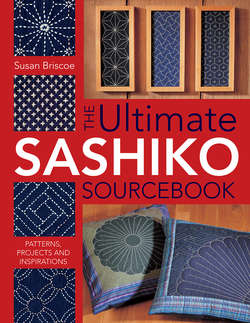Читать книгу The Ultimate Sashiko Sourcebook - Susan Briscoe - Страница 14
На сайте Литреса книга снята с продажи.
Sashiko decline and revival
ОглавлениеBy the 1950s, increased prosperity and the introduction of man-made fibres began to change the way country people dressed, and sashiko declined. Old, worn sashiko garments were not always valued and many were thrown away. Modern redevelopment has taken a toll on the old kura (family storehouses) where sashiko was stored, as have fires and earthquakes. Fortunately, the respect for old cloth led some people to carefully preserve old sashiko and other textiles, which are now prized by museums and collectors as examples of mingei (folk art). A sashiko revival began in the 1970s, parallel to the rise in Western quilting in Japan. As the role of sashiko as a frugal necessity has disappeared, people are appreciating stitching sashiko for its creative, relaxing and even therapeutic qualities. In the 21st century, sashiko continues to evolve.
Patterns used for sashiko inspired by architectural and interior design details include, asanoha (hemp leaf, page 72) and ishidatami (paving block, page 77), as shown in an antique screen panel over a doorway and a modern ceiling woven from thin strips of wood. Ishi-datami is an ancient paving pattern.
Popular early 20th-century patterns. The woman on the right wears a red tasuki cord on her shoulders to keep her kimono sleeves out of the way while resting her bucket on the igeta (well curb, see sashiko pattern on page 79). The crouching woman’s kimono is stencilled with kakuyose (intersecting square corners, see pattern on page 78).
EARLY 20TH-CENTURY POSTCARD, AUTHOR’S COLLECTION
